The Cretaceous Period (145-66 million years ago) represented one of Earth’s most fascinating chapters, when dinosaurs dominated terrestrial environments while unique freshwater ecosystems thrived. These ancient lakes, rivers, and wetlands hosted a remarkable diversity of life forms, many quite different from their modern counterparts. As our planet experienced dramatic climate shifts and continental movements, freshwater environments evolved and adapted, creating unique habitats for countless species. While marine fossils often dominate our understanding of this period, freshwater ecosystems played a crucial role in Cretaceous biodiversity and deserve similar attention. These environments provided vital resources and served as evolutionary laboratories where many modern groups of freshwater organisms first appeared or diversified.
The Changing Geography of Cretaceous Freshwater Systems
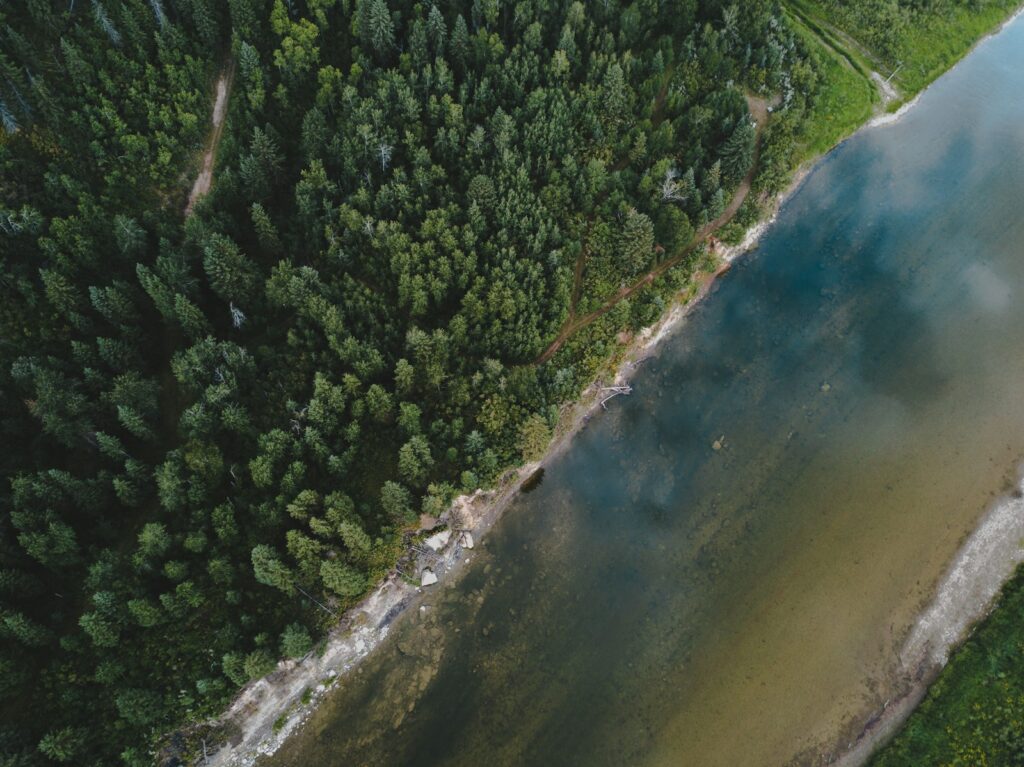
During the Cretaceous, the continued breakup of the supercontinent Pangaea dramatically influenced freshwater ecosystems worldwide. As landmasses separated, new river systems formed, ancient lakes were created, and unique isolated watersheds developed across the fragmenting continents. The early Cretaceous saw North America separated from Eurasia by expanding oceans, while South America, Antarctica, and Australia remained connected. These shifting continental configurations created novel drainage patterns, with some river systems extending thousands of kilometers across the emerging landscapes. The splitting of continents also meant freshwater fauna evolved in isolation, leading to distinct regional assemblages of species. By the Late Cretaceous, sea levels were significantly higher than today, creating extensive coastal wetlands and estuarine environments that blurred the boundaries between freshwater and marine ecosystems.
Climate Conditions Shaping Freshwater Habitats

The Cretaceous Period is widely recognized as one of Earth’s warmest intervals, with global temperatures estimated to be 4-11°C higher than modern averages. This greenhouse climate profoundly influenced freshwater ecosystems, with warmer water temperatures affecting everything from metabolic rates to dissolved oxygen levels. The climate was remarkably equable, with reduced temperature gradients between the equator and poles creating more uniform conditions across latitudes. Precipitation patterns also differed from today, with evidence suggesting intensified hydrological cycles in many regions. The increased warmth and precipitation in traditionally drier latitudes allowed freshwater ecosystems to thrive in regions that today might be arid or semi-arid. Evidence from fossil soils and plant remains indicates that some Cretaceous lakes experienced seasonal fluctuations, creating dynamic ecosystems that organisms had to adapt to throughout the year.
Remarkable Freshwater Fish Diversity
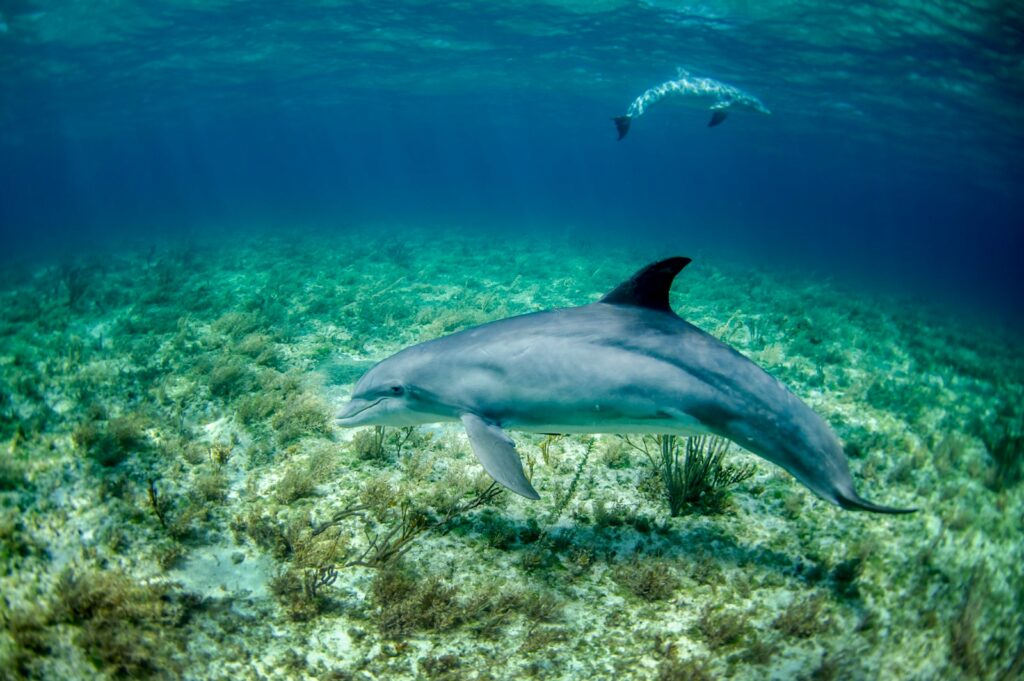
Cretaceous freshwater environments witnessed an extraordinary diversification of fish species, including many groups that remain important today. Perhaps most significantly, this period saw the radiation of teleost fishes, the dominant group of bony fishes in modern ecosystems. Fossil evidence from formations like the Santana Formation in Brazil reveals exquisitely preserved freshwater fish specimens, providing glimpses into their ancient diversity. Many primitive ray-finned fishes still thrived in Cretaceous lakes and rivers, including relatives of modern gars, bowfins, and sturgeons. Lungfishes, which today are restricted to Africa, South America, and Australia, were more widespread during the Cretaceous, with fossils found across Europe and North America. The Late Cretaceous also witnessed the appearance of early representatives of many modern freshwater fish families, laying the foundation for contemporary freshwater ecosystems around the world.
Aquatic Reptiles of Cretaceous Freshwater Systems

While their marine cousins like mosasaurs and plesiosaurs often capture more attention, Cretaceous freshwater systems hosted their remarkable reptilian inhabitants. Crocodilians reached impressive diversity during this period, with dozens of species occupying various ecological niches in lakes and rivers worldwide. Some freshwater turtles grew to enormous sizes, such as Stupendemys from South America, which could reach shell lengths exceeding two meters. The champsosaurs, crocodile-like reptiles that weren’t true crocodilians, were common predators in many Northern Hemisphere freshwater ecosystems. Some dinosaurs showed adaptations for semi-aquatic lifestyles, with Spinosaurus recently recognized as potentially the first known swimming dinosaur, hunting in rivers of North Africa. Snake-like aquatic reptiles like Pachyrhachis and Haasiophis also appeared during the Cretaceous, representing early experiments in aquatic adaptation among these emerging reptiles.
Invertebrate Life in Cretaceous Freshwaters

The invertebrate communities of Cretaceous freshwater ecosystems were remarkably diverse, though their fossil record is less complete than for larger vertebrates. Insects underwent significant diversification, with many modern aquatic groups establishing themselves during this period. Fossil evidence reveals sophisticated dragonflies patrolled above Cretaceous ponds and streams, while their larvae hunted below the water surface. Various clams and snails thrived in these ancient waters, with some groups showing remarkable similarities to their modern descendants. Crayfish, freshwater crabs, and various other crustaceans served as important components of these ecosystems, processing organic matter and providing food for larger animals. Microscopic organisms like diatoms became increasingly important during the Cretaceous, fundamentally changing nutrient cycling and productivity in freshwater systems. The evolution of these smaller organisms had cascading effects throughout freshwater food webs, influencing the trajectory of freshwater ecosystem development.
Plants and Primary Producers of Cretaceous Freshwater Ecosystems

The Cretaceous Period marked a revolutionary time for aquatic plant life, with the first appearance and diversification of flowering plants (angiosperms) that would eventually dominate many freshwater ecosystems. Early water lilies and their relatives began colonizing the margins and surfaces of lakes and ponds, creating new habitats for countless animal species. Fossil evidence from formations like the Dakota Sandstone in North America preserves exquisite impressions of these early aquatic angiosperms. Algae remained crucial primary producers in Cretaceous freshwater systems, with green algae particularly abundant in many deposits. Along the edges of lakes and rivers, primitive horsetails, ferns, and conifers created transitional zones between fully aquatic and terrestrial environments. These vegetated freshwater margins provided crucial nursery habitats for many animal species, much as they do in modern ecosystems.
Famous Cretaceous Freshwater Fossil Sites
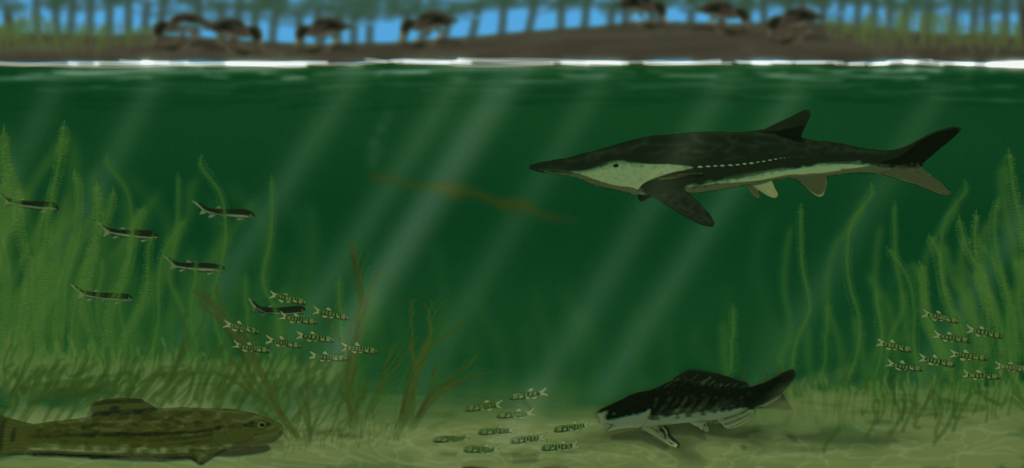
Several exceptional fossil sites around the world have provided extraordinary windows into Cretaceous freshwater ecosystems. The Yixian Formation in China’s Liaoning Province preserves a remarkable lakeside ecosystem from the Early Cretaceous, complete with feathered dinosaurs, primitive mammals, and numerous aquatic organisms. Brazil’s Santana Formation contains some of the world’s best-preserved fossil fish, providing detailed information about freshwater communities from the mid-Cretaceous of South America. The Hell Creek Formation in the western United States offers glimpses of Late Cretaceous freshwater ecosystems just before the end-Cretaceous extinction event. Spain’s Las Hoyas fossil site preserves an Early Cretaceous wetland ecosystem with exceptional detail, including soft-bodied organisms rarely preserved elsewhere. These fossil Lagerstätten (sites of exceptional preservation) allow paleontologists to reconstruct ancient freshwater food webs with remarkable accuracy, revealing complex ecological interactions from millions of years ago.
Ancient Lake Ecosystems and Their Unique Characteristics

Cretaceous lakes ranged from small ephemeral ponds to vast inland seas, each with distinctive ecological characteristics. Some ancient lakes developed highly specialized endemic faunas, as organisms adapted to unique local conditions over thousands or millions of years. The Songliao Basin in northeastern China contained a massive lake system during the Late Cretaceous that fluctuated between freshwater and brackish conditions as the climate changed. Evidence from sediment cores reveals that some Cretaceous lakes underwent dramatic changes in water chemistry, sometimes becoming hypersaline or strongly alkaline during dry periods. Deep anoxic conditions in some lake basins created ideal environments for exceptional fossil preservation, explaining why lake deposits often yield such spectacularly preserved specimens. Paleontologists can reconstruct ancient lake conditions using multiple lines of evidence, including sediment characteristics, fossil assemblages, and geochemical signatures preserved in rocks.
River Systems and Floodplains of the Cretaceous
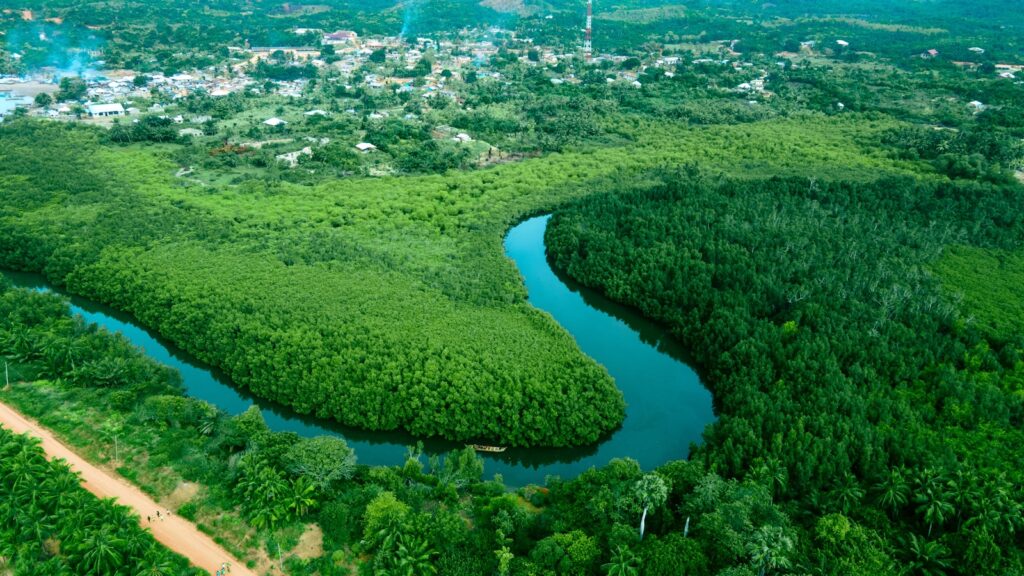
Cretaceous river systems carved through landscapes quite different from those we know today, creating dynamic ecosystems that supported tremendous biodiversity. Major river systems like those preserved in the Dinosaur Park Formation of Alberta or the Judith River Formation of Montana show evidence of meandering channels, oxbow lakes, and extensive floodplains. Seasonal flooding events deposited nutrient-rich sediments across vast areas, creating productive habitats for both aquatic and terrestrial organisms. The interaction between rivers and coastal environments became increasingly important during the Cretaceous as rising sea levels created extensive delta systems worldwide. Fossil evidence indicates that many dinosaurs frequented river environments, possibly exploiting abundant food resources or using waterways as migration corridors. Cretaceous river deposits often preserve a mixed assemblage of terrestrial and aquatic organisms, highlighting the ecological connections between these environments.
Wetlands and Transitional Environments
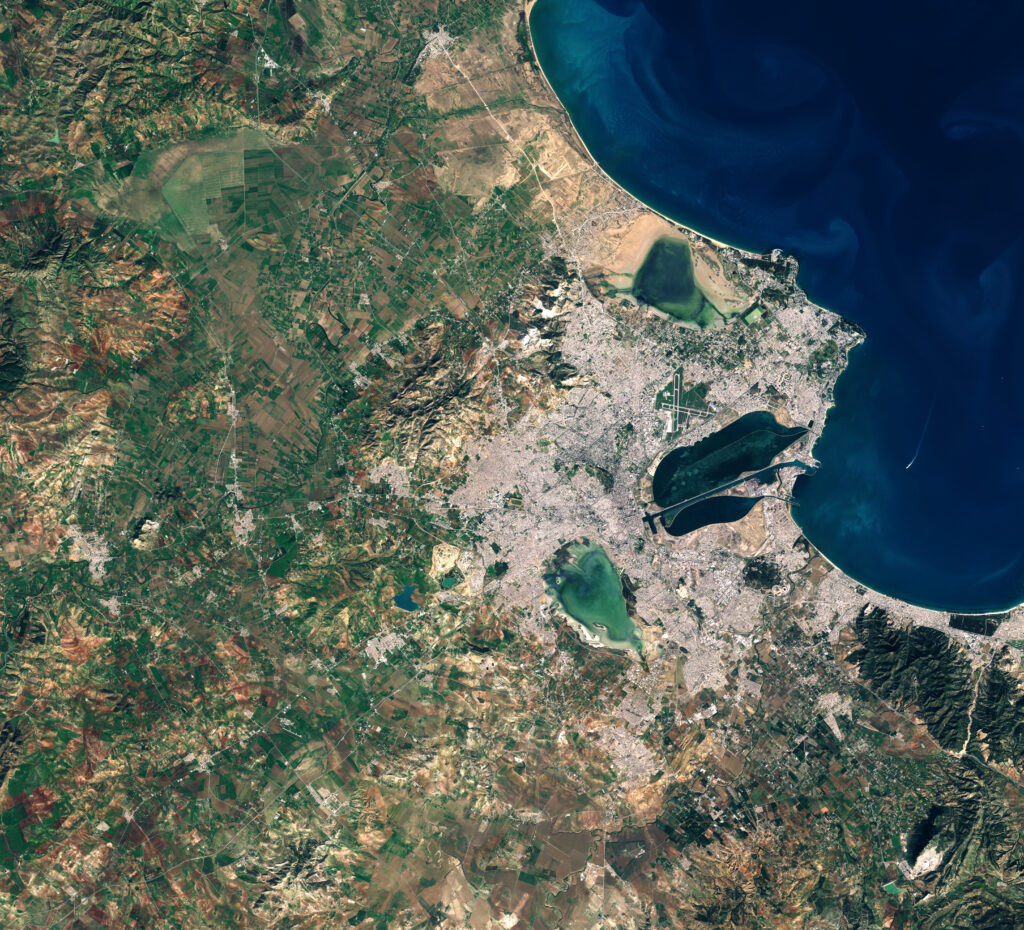
Wetlands occupied the crucial interface between fully aquatic and terrestrial environments during the Cretaceous, supporting unique ecological communities. Fossil evidence from formations like the Dinosaur Park Formation in Alberta, Canada, reveals extensive marshlands with diverse plant and animal life. Cretaceous coastal wetlands were particularly extensive due to higher sea levels, creating vast areas of freshwater-marine transition zones. These brackish environments presented physiological challenges for organisms but also created evolutionary opportunities for those that could adapt to changing salinity. Wetland environments likely served as important nursery areas for juvenile animals, just as they do in modern ecosystems. The abundant plant matter in these environments also created conditions ideal for coal formation, with many Cretaceous coal deposits representing ancient wetland ecosystems preserved over millions of years.
Ecological Interactions in Cretaceous Freshwater Environments

The complex web of predator-prey relationships, competition, and symbiosis that characterized Cretaceous freshwater ecosystems can be glimpsed through careful analysis of fossil evidence. Predatory fish and aquatic reptiles developed increasingly sophisticated hunting strategies, evidenced by their specialized dentition and skeletal adaptations. Herbivory became more complex with the diversification of aquatic plants, creating new ecological niches for specialized plant-eaters. Parasitism is occasionally preserved in the fossil record, with evidence of parasitic infections found in some exceptionally preserved specimens. Some fossil deposits preserve multiple organisms in close association, suggesting possible symbiotic relationships or social behaviors among certain aquatic species. The integration of paleontological data with insights from modern ecological theory allows scientists to reconstruct these ancient interactions with increasing confidence, revealing dynamic ecosystems that rivaled modern ones in complexity.
The End-Cretaceous Mass Extinction in Freshwater Ecosystems

The asteroid impact that marked the end of the Cretaceous Period 66 million years ago had profound effects on freshwater ecosystems, though these environments experienced different patterns of extinction than marine or terrestrial systems. Research suggests that freshwater organisms generally survived the extinction event at higher rates than their terrestrial counterparts, potentially due to the buffering properties of aquatic environments. Food webs based on detritus rather than living plant matter may have sustained many freshwater communities through the darkened “impact winter” following the asteroid strike. Certain groups like crocodilians, turtles, and amphibians persisted through the extinction with relatively minor losses, while freshwater fish also showed noteworthy resilience. The selective survival patterns among freshwater organisms had lasting implications for the development of modern freshwater ecosystems, determining which lineages would be available to repopulate and diversify in the subsequent Paleogene Period.
Legacy and Relevance to Modern Freshwater Ecosystems

The freshwater ecosystems of the Cretaceous laid important foundations for the aquatic environments we observe today, with many modern groups tracing their origins or major diversification to this period. Understanding the resilience and adaptability of Cretaceous freshwater communities offers valuable insights into how modern ecosystems might respond to current and future environmental changes. Research into ancient freshwater systems helps scientists establish baseline patterns of ecosystem development over evolutionary timescales, contextualizing modern biodiversity patterns. The study of these ancient environments also reinforces the importance of considering both biological and geological factors when analyzing ecological systems, as the two were intimately linked during the Cretaceous, just as they are today. Certain Cretaceous freshwater organisms serve as excellent examples of evolutionary adaptation, providing case studies in how species respond to changing environmental conditions over time.
Conclusion

The freshwater ecosystems of the Cretaceous Period were dynamic, complex environments that supported tremendous biodiversity during a critical interval in Earth’s history. From microscopic algae to massive predatory reptiles, these ancient lakes, rivers, and wetlands hosted interconnected communities that responded to changing continental configurations and climatic conditions. Their fossil record, though less complete than that of many marine environments, provides fascinating glimpses into evolutionary innovations and ecological relationships that would shape freshwater biodiversity for millions of years to come. As we face unprecedented changes to modern freshwater ecosystems through climate change, pollution, and habitat destruction, these ancient examples remind us of the resilience and vulnerability of freshwater communities through deep time. By understanding the patterns of adaptation, diversification, and extinction in Cretaceous freshwater ecosystems, we gain a valuable perspective on the long evolutionary history that produced the remarkable freshwater biodiversity we seek to protect today.




